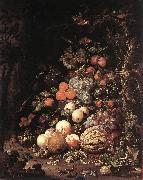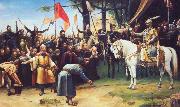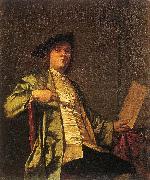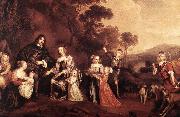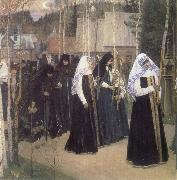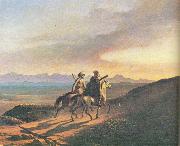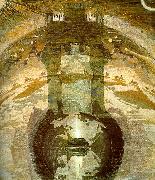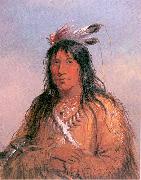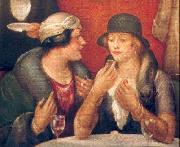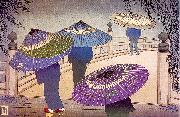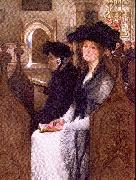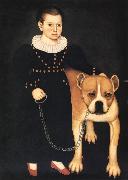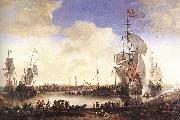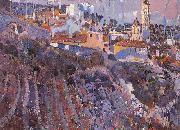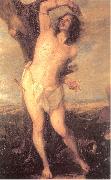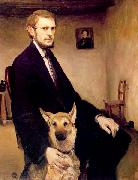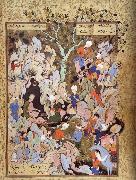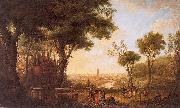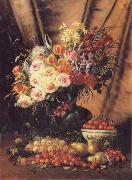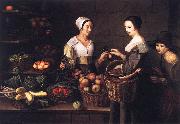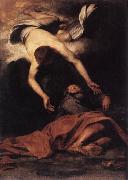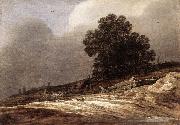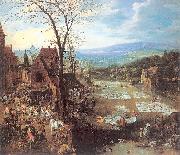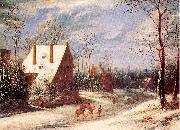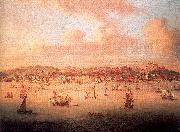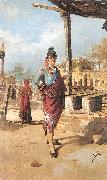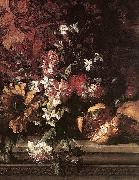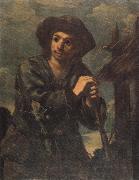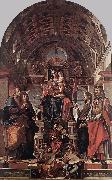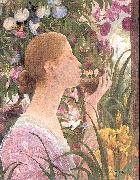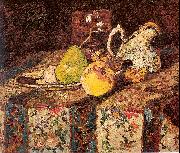|
|
|
|
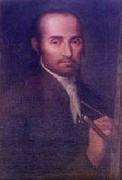 |
Miguel Cabrera
|
|
(1695-1768) was an indigenous Zapotec painter during the Viceroyalty of New Spain, today's Mexico. During his lifetime, he was recognized as the greatest painter in all of New Spain.
He was born in Antequera, today's Oaxaca, Oaxaca, and moved to Mexico City in 1719. He may have studied under the Rodreguez Juerez brothers or Jose de Ibarra.
Cabrera was a favorite painter of the Archbishop and of the Jesuit order, which earned him many commissions. His work was influenced by Bartolome Esteban Murillo and the French painting of his time.
While Miguel is most famous for his Casta paintings and his portrait of the poet Sor Juana, he also executed one of the first portraits of St. Juan Diego. In 1752 he was permitted access to the icon of Our Lady of Guadalupe to make three copies: one for Archbishop Jose Manuel Rubio y Salinas, one for the Pope, and a third to use as a model for further copies. In 1756 he created an important early study of the icon of Our Lady of Guadalupe, Maravilla americana y conjunto de raras maravillas observadas con la direccien de las reglas del arte de la pintura
The essential purpose of Maravilla Americana was to affirm the 1666 opinions of the witnesses who swore that the image of the Virgin was of a miraculous nature. However, he also elaborated a novel opinion: the image was crafted with a unique variety of techniques. He contended that the Virgin's face and hands were painted in oil paint, while her tunic, mandorla, and the cherub at her feet were all painted in egg tempera. Finally, her mantle was executed in gouache. He observed that the golden rays emanating from the Virgin seemed to be of dust that was woven into the very fabric of the canvas, which he asserted was of "a coarse weave of certain threads which we vulgarly call pita," a cloth woven from palm fibers.
In 1753, he founded the second Academy of Painting in Mexico City and served as its director.
|
|
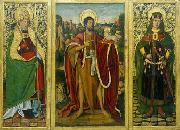 |
Miguel Ximenez
|
|
painted Saint John the Baptist; Saint Fabian and Saint Sebastian in 1494 |
|
|
|
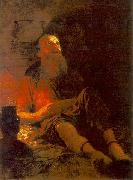 |
Mihaly Zichy
|
|
(Hungarian pronunciation: [ˈmihaːj ˈzitʃi]; German: Michael von Zichy; October 15, 1827, Zala, Hungary - February 28, 1906, St. Petersburg, Russia) was a Hungarian painter and graphic artist.
Mihely Zichy was a significant representative of Hungarian romantic painting. During his law studies in Pest from 1842, he attended Jakab Marastoni's school as well. In Vienna he was Waldmeller's pupil in 1844. "Life Boat", his first major work, comes from this time. On Waldmeller's recommendation, he became an art teacher in St. Petersburg. He swore allegiance to freedom by painting the portrait of Lajos Batthyeny, the first Hungarian prime minister, in 1849. From 1850 onwards, he worked as a retoucher, but he also did pencil drawings, water colours and portraits in oil. The series on the Gatchina hunting ordered by the Russian tsar raised him to a court artist. He founded a society to support painters in need. "Autodafe" on the horrors of Spanish inquisition was painted in 1868. He travelled around Europe in 1871, and settled down in Paris in 1874.
He painted "Queen Elisabeth is Laying Flowers by the Coffin of Ferenc Deek" on Treffort's order. "Drinking Bout of Henry III", his next large scale picture came from 1875. "The Victory of the Genius of Destruction" painted for the Paris Exhibition was banned by French authorities because of its daring antimilitarist message. He left Paris in 1881 and returned to St. Petersburg after short stays in Nizza, Vienna and Zala (village). From this time onwards, he was mostly engaged in illustrations ("The Tragedy of Man" by Made - h, 1887, and twenty-four ballads of Jenos Arany, 1894 - 98).
|
|
|
|
|
|
 |
mikhail glinka
|
|
Period: Romantic (1820-1869)
Country: Russia
Born: June 01, 1804 in Novospasskoye, Smolensk, Russia
Died: February 15, 1857 in Berlin, Germany
Genres: Chamber Music, Keyboard Music, Miscellaneous Music, Opera, Orchestral Music, Vocal Music
|
|
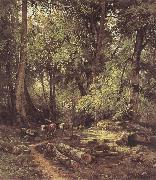 |
Mikhail Klodt
|
|
St. Petersburg,a descendant of an art dynasty1832-1902 |
|
|
|
|
|
|
|
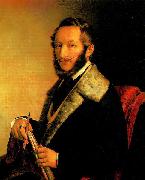 |
Miklos Barabas
|
|
(February 10, 1810 in Mărcuşa, now Romania - February 12, 1898 in Budapest) was a Hungarian painter. He his mostly known for his portrait paintings.
He was born in Kezdimerkosfalva. He spent most of his life in Pest, where he was director of the art society from 1862 until his death. He became a member of the Parliament of Hungary in 1867. He died in Budapest.
|
|
|
|
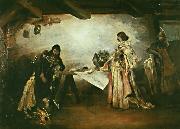 |
Mikolas Ales
|
|
(November 18, 1852 in Mirotice near Pisek - July 10, 1913 in Prague) was a Czech painter.
Ales was born in 1852 in Mirotice into a relatively rich family that was in debt at the time. He was taught history by his brother Frantisek until his death in 1865; he expressed interest in painting at an early age. In 1879 he got married to Marina Kailova and moved to Italy where he continued his career in painting. He moved back to Prague working on the new artwork at the Prague National Theatre; he died in Prague at the age of 60.
Ales is estimated to have had over 5,000 published pictures, he has painted for everything from magazines to playing cards to textbooks. His paintings were not publicized too widely outside Bohemia, but many of them are still available, and Mikolas Ales is certainly regarded as one of the country's best painters
|
|
|
|
|
|
|
|
|
|
|
|
|
|
|
|
|
|
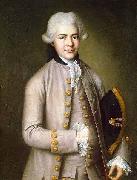 |
Mina Kolokolnikov
|
|
1708e-1775e) was a Russian painter and teacher.
Kolokolnikov was born in the village of Kravotyn in Tver gubernia. He was a serf of the Pafnutievo-Borovsky Monastery, and learnt the art of portrait painting from Ivan Nikitich Nikitin and Louis Caravaque; he also studied icon painting with Vasily Vasilevsky.
He is known to have assisted in the decoration of the palace at Tsarskoye Selo, and to have lived for a time in St. Petersburg, where one of his pupils was Trifon Anisimov. One of his portraits is in the Tver Regional Picture Gallery. He worked in the studio of Alexei Antropov; consequently, it is often difficult to tell Kolokolnikov's works from Antropov's, as both have very similar technique.
Kolokolnikov's brothers Ivan and Fedot were also painters.
|
|
|
|
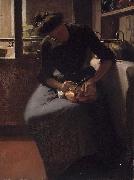 |
Minerva Josephine Chapman
|
|
(1858 - 1947) was an American painter. She was known for her work in miniature portraiture, landscape, and still life.
She was born in Sand Bank, New York and grew up in Chicago, Illinois. She studied at a number of institutions including Mount Holyoke College (where she graduated from in 1880) and the Art Institute of Chicago. She lived and studied in Paris from the late 1880s to 1915, and again after the first world war, where she established her reputation as an artist. She retired to Palo Alto, California and died at the age of 88.
|
|
|
|
|
|
|
|
|
|
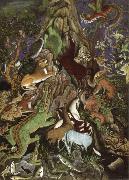 |
miskin
|
|
miskin was one of the best painters in the imperial atelier of akbar(1542 to 1605). |
|
|
|
|
|
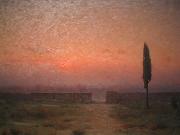 |
Modest Urgell
|
|
Modest Urgell (1839-1919) was a Spanish Catalan painter, illustrator, and playwright of comedies. He was educated at the Llotja School, in Barcelona, with Ramon Marte i Alsina and knew Gustave Courbet after a visit to Paris. Though he painted portraits, his prolific body of work is dominated by Neo-romantic landscapes, such as Fields of Loneliness (Campos de Soledad) (1894). He also acted and wrote such works for the theatre as Far from the Eyes, Close to the Heart (Lejos de los Ojos, Cerca del Corazon) (1898).
In 1910 he taught at the School of Industrial and Fine Arts in Barcelona. Whilst he was there he worked with Josep Pasce and he taught the young Joan Miro. |
|
|
|
|
|
|
|
|
|
|
|
|
|
|
|
|
|
 |
MOMPER, Joos de
|
|
Flemish painter (b. 1564, Antwerpen, d. 1634/35, Antwerpen).
|
|
|
|
|
|
|
|
|
|
|
|
|
|
|
|
|







